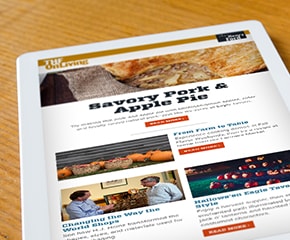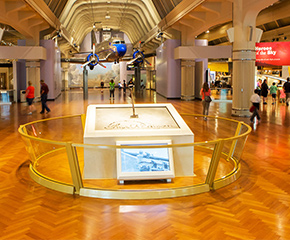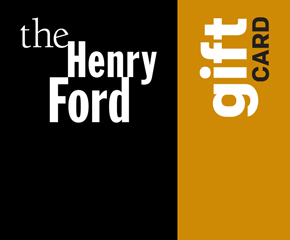Brochure and Timetable for Wabash Railroad's Streamliner, "City of Kansas City," 1950
Add to SetSummary
The Wabash Railway, with origins dating back to 1838, was a strong Midwestern carrier until Amtrak took over the national passenger railroad system in 1971. With a revival of profits during World War II, optimistic Wabash managers took the plunge and invested in new lightweight, diesel-powered streamliners. First of these was the City of Kansas City, introduced in 1947. …
The Wabash Railway, with origins dating back to 1838, was a strong Midwestern carrier until Amtrak took over the national passenger railroad system in 1971. With a revival of profits during World War II, optimistic Wabash managers took the plunge and invested in new lightweight, diesel-powered streamliners. First of these was the City of Kansas City, introduced in 1947.
The Wabash Railway, with origins dating back to 1838, was a strong Midwestern carrier until Amtrak took over the national passenger railroad system in 1971.
By the late 1920s and early 1930s, streamlined airplanes -- with teardrop shapes and aerodynamic lines -- denoted fluid motion, speed, and efficiency. These design principles soon spread to railroad design, inspired by the work of industrial designers Henry Dreyfuss and Raymond Loewy. This involved both aerodynamic styling and an integration of parts to create a unified form. The first streamlined train was the Burlington Zephyr (operated by the Chicago, Burlington, and Quincy Railroad), introduced in 1934 with its inaugural run between Denver and the Century of Progress Exposition in Chicago.
Passengers embraced both the real and symbolic value of streamlined railroads. They dramatically symbolized progress and hope for a better tomorrow. They demonstrated that the railroad companies were not hidebound, conservative, resistant to change and arrogant to passengers. They appealed to the romance and glamour of long-distance travel, something that railroads had somehow lost over time to automobiles. Hoping to lure passengers away from automobiles, railway executives sought to imbue rail travel with an up-to-date image of modernity. The risk paid off, as the sleek new aerodynamic forms attracted public attention. Within a few years, all major railroads had ordered new fleets of streamlined locomotives and passenger cars. Many used the new diesel power. Others were still traditional steam-powered, with their exteriors covered with smooth streamlined shrouding. Industrial designers also transformed the cars' interiors with sleek new materials like brushed aluminum, Formica plastic laminate, and cork paneling -- all considered refreshing alternatives to the dull colors and dark wood of traditional railway interiors. By the late 1930s, unconverted trains seemed like "quaint specimens," as "outmoded as a Model T Ford."
During the mid- and late 1930s, major railroad lines -- like the New York Central and the Pennsylvania Railroad -- immediately placed orders for new stainless steel coaches, producing such iconic streamliners as the Broadway Limited and Twentieth Century Limited. But smaller lines could not hope to compete during the hard economic times. When World War II ended, however, many railroad companies felt optimistic.
Wabash managers, feeling that they were poised for a bright future, took the plunge and invested in new lightweight, diesel-powered streamliners. First of these was the City of Kansas City, introduced in 1947 in a cooperative arrangement with the Union Pacific to principally serve Missouri passengers and Western markets. Railway Age noted that it "has been designed and styled to provide an appearance of unity from locomotive to observation end."
With the City of Kansas City, the Wabash became fully part of the streamlined era. It became an instant hit. Diesel power brought faster scheduled train operation, smoother, quieter riding, cleaner and on-time arrival with high regularity. This 1950 brochure called the sleek silver-and-blue streamliner a "beautiful modern train." "There's luxury from end to end," it claimed, "luxury that means extra pleasure and extra comfort every minute and every mile." It boasted a beautiful diner, a cozy cocktail lounge, a spacious observation and parlor-lounge equipped with radio, and a coffee shop club room for between-meal snacks, light meal service, and soft drinks. The brochure made a special note to promise passengers that smoking rooms were separate. The City of Kansas City also featured an unusual "picture-window view in the dome cars." Although some people criticized this Midwestern line for offering views only of endless prairie (as compared to the domed cars for viewing spectacular landscapes out West), this proved quite popular with passengers. Finally, comfortable, reclining, "Sleepy Hollow" seats invited them to relax. This superb Wabash streamliner offered "extra comfort at no extra fare..." -- reinforcing the ideal that comfort and luxury were available to all.
Artifact
Brochure
Date Made
1950
Subject Date
1950
Keywords
Collection Title
On Exhibit
By Request in the Benson Ford Research Center
Object ID
2012.67.11
Credit
From the Collections of The Henry Ford. Gift in Memory of John A. Barrett.
Material
Paper (Fiber product)
Color
Multicolored
Red
Dimensions
Height: 9 in
Width: 4 in
Inscriptions
Text on front: Between St. Louis / and Kansas City / To give day-time travelers / extra comfort / at no extra fare... / Route them via / THE LUXURIOUS / WABASH / STREAMLINER / "CITY OF KANSAS CITY"





